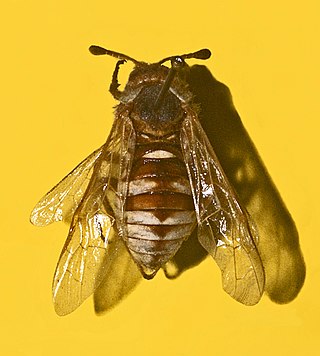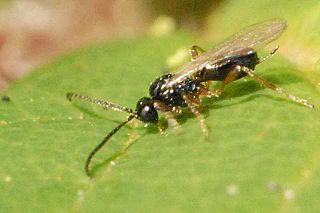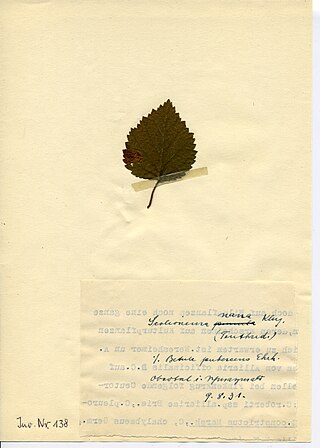Suborder Symphyta (sawflies)
Superfamily Xyeloidea
- Xyelidae 1 species
- Xyela julii
Superfamily Pamphilioidea
- Pamphilidae (leaf-rolling / web-spinning sawflies) 8 species
including
Superfamily Siricoidea

- Siricidae (horntail, wood wasp) 5 species including
- Urocerus gigas
- Sirex cyaneus
- Sirex juvencus
- Sirex noctilio
- Xeris spectrum
Superfamily Cephoidea (stem sawflies)
- Cephidae 1 species
- Calameuta pallipes
Superfamily Tenthredinoidea


- Argidae (some sawflies) 7 species including
- Arge cyanocrocea
- Arge ustulata
- Sterictiphora geminata
- Cimbicidae (large-bodied, often hairy sawflies) 10 species including
- Abia sericea
- Cimbex femoratus
- Trichiosoma lucorum
- Trichiosoma vitellina
- Diprionidae (conifer sawflies) 3 species including
- Neodiprion sertifer
- Diprion pini
- Tenthredinidae (many sawflies) 239 species [4] including
- Aglaostigma aucupariae
- Aglaostigma fulvipes
- Allantus cinctus
- Amauronematus lateralis
- Aneugmenus padi
- Apethymus serotinus
- Athalia circularis
- Athalia cordata
- Athalia lugens
- Athalia rosae
- Athalia scutellariae
- Calameuta pallipes
- Caliroa cerasi
- Cladius pectinicornis
- Dolerus aeneus
- Dolerus aericeps
- Dolerus bajulus
- Dolerus germanicus
- Dolerus madidus
- Dolerus nitens
- Dolerus picipes
- Dolerus varispinus
- Dolerus vestigialis
- Empria liturata
- Endelomyia aethiops
- Euura pavida
- Eutomostethus ephippium
- Eriocampa ovata
- Fenella nigrita
- Fenusa dohrnii
- Fenusa pumila
- Fenusella hortulana
- Fenusella nana
- Halidamia affinis
- Hemichroa australis
- Hemichroa crocea
- Heterarthrus microcephalus
- Heterarthrus nemoratus
- Heterarthrus vagans
- Hoplocampa pectoralis
- Macrophya duodecimpunctata
- Macrophya punctumalbum
- Mesoneura opaca
- Metallus pumilus
- Monophadnoides rubi
- Monostegia abdominalis
- Monsoma pulveratum
- Nematus lucidus
- Nematus myosotidis
- Nematus ribesii
- Nematus spiraeae
- Nematinus acuminatus
- Nesoselandria morio
- Pachynematus clitellatus
- Pachyprotasis antennata
- Pachyprotasis rapae
- Periclista albida
- Perineura rubi
- Pristiphora geniculata
- Pristiphora cincta
- Pristiphora laricis
- Pristiphora mollis
- Pristiphora staudingeri
- Profenusa pygmaea
- Pseudodineura fuscula
- Rhogogaster viridis
- Selandria serva
- Strombocerus delicatulus
- Strongylogaster multifasciata
- Tenthredo arcuata
- Tenthredo atra
- Tenthredo balteata
- Tenthredo brevicornis
- Tenthredo ferruginea
- Tenthredo livida
- Tenthredo colon
- Tenthredo mesomela
- Tenthredo mioceras
- Tenthredo moniliata
- Tenthredo notha
- Tenthredo obsoleta
- Tenthredo temula
- Tenthredopsis nassata
- Tenthredopsis scutellaris




















